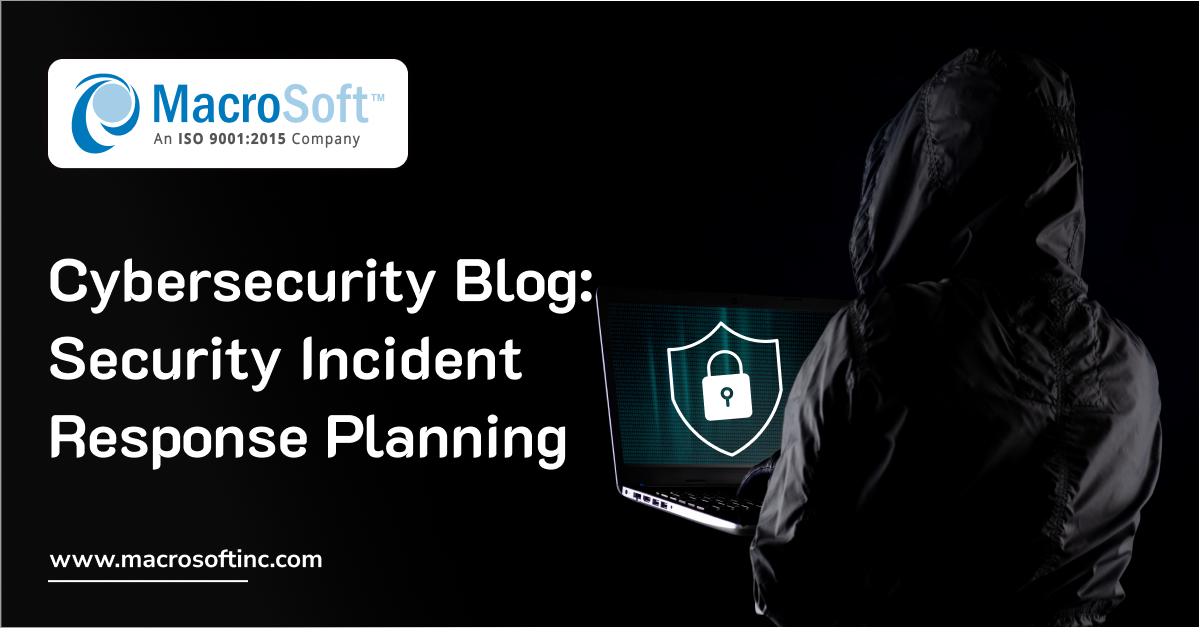

In today’s digital age, the importance of cybersecurity cannot be overstated. With cyber threats becoming more sophisticated and prevalent, organizations must prioritize security incident response planning to protect their data, systems, and reputation. In this blog post, we will delve into the critical aspects of security incident response planning and explore some alarming statistics that highlight the urgency of proactive cybersecurity measures.
The Significance of Security Incident Response Planning
Security incident response planning is a proactive approach that enables organizations to effectively detect, respond to, and recover from security incidents. These incidents can range from internet born network attacks, data breaches, ransomware, malware infections, to insider threats and system vulnerabilities. By having a well-defined incident response plan in place, organizations can minimize the impact of security incidents, reduce downtime, and safeguard their sensitive information.
Key Components of Security Incident Response Planning
- Incident Detection: Implementing robust monitoring tools, intrusion detection systems and threat management regimen to promptly identify security incidents. Identifying an event and conducting an assessment should be performed to confirm the existence and severity of an incident. The assessment should include determining the scope, impact, and extent of the damage caused by the incident.
- Response Coordination: Establishing clear roles and responsibilities for incident response team members to ensure a coordinated and efficient response. The incident response team should have a dedicated/defined executive leader to oversee incident response to ensure that the business needs of the organization are adhered to. The Response Team is typically comprised of a team of technical staff that work directly with the affected information systems to research the time, location, and details of an incident. Team members should include systems subject matter experts, senior level IT staff, third party remediation vendors, outsourced security/forensic partners, and legal authorities.
- Containment and Eradication: Taking immediate action to contain the incident, mitigate further damage, and eradicate the threat from the environment. This must be followed by a full inspection of systems that may be affected to ensure incident residuals are mitigated. Containment and eradication tasks and solutions should be documented. This is important so that any unexpected/unknown adverse effects that may derive from incident remediation can be corrected. Additionally, this will enable the incident team to address potential future breaches more expeditiously, as well as provide thorough evidence for any legal recourses which may result from an incident.
- Forensic Analysis: This phase includes the review of root cause to determine why/how the incident happened and how the incident could have potentially been avoided. Lessons learned from the incident must be communicated to executive management and action plans should be developed to improve future incident management practices and reduce overall risk exposure. Incident forensic investigators should compile a report that explains what happened during the security event and, if possible, identifies suspects or culprits. The report may contain recommendations for thwarting future attacks. Forensic evidence and reports may need to be shared with law enforcement, insurers, regulators, and other authorities as required.
- Communication: Keeping stakeholders informed throughout the incident response process to maintain transparency and build trust is extremely important. Effective methods for both internal and outside parties to report incidents is equally critical as sometimes employees/system users of information may be the first to observe a problem. It is important that that employees and systems users are educated in how to report suspicious activities to management and the incident response team. In addition, employees and systems users should only report incidents to approved members of management and the incident response team. Discussing an incident to members outside of your organization could lead to significant impact on the business as well as create legal issues for the individual and entire organization.
Alarming Statistics on Cybersecurity Incidents
1. Rise in Cyber Attacks
According to a recent study by a leading cybersecurity firm, cyber-attacks have increased by 67% in the past year, with ransomware attacks being the most prevalent threat. This highlights the growing need for organizations to strengthen their cybersecurity defenses and response capabilities.
2. Impact of Data Breaches
Data breaches continue to have a significant financial impact on businesses, with the average cost per breach reaching a staggering $4.24 million. Furthermore, 60% of small companies that suffer a cyber-attack go out of business within six months, underscoring the importance of proactive security measures.
3. Lack of Preparedness
Shockingly, a survey revealed that 68% of organizations do not have a formal security incident response plan in place. This lack of preparedness leaves them vulnerable to cyber threats and could result in severe consequences in the event of a security incident.
Consider this scary statistic:
If Cybercrime were an economy, it would be the world’s 3rd largest economy!
Best Practices for Security Incident Response Planning
To enhance the effectiveness of security incident response planning, organizations should adhere to best practices and guidelines recommended by cybersecurity experts. Here are some key practices to consider:
- Regular Testing and Training: Conducting regular drills and simulations to test the incident response plan and ensure that all team members are well-equipped to handle security incidents effectively. This should include education of all employees, associated, business partners, and system users on how to recognize and report potential incidents.
- Continuous Monitoring: Implementing real-time monitoring and threat management solutions to detect suspicious activities and potential security threats before they escalate into full-blown incidents.
- Collaboration with Stakeholders: Establishing partnerships with law enforcement agencies, cybersecurity professionals, and industry peers to share threat intelligence and collaborate on incident response efforts.
- Post-Incident Evaluation: Conducting a post-incident analysis to identify areas for improvement, lessons learned, and strategies for enhancing the incident response plan for future incidents.
- Compliance with Regulations: Ensuring that the incident response plan aligns with regulatory requirements and industry standards, such as GDPR, HIPAA, and PCI DSS, to avoid legal repercussions and financial penalties.
Cybersecurity Trends and Predictions
- AI-Powered Attacks: Cybercriminals are increasingly leveraging AI and machine learning to automate attacks, evade detection, and launch sophisticated cyber campaigns.
- Supply Chain Vulnerabilities: Third-party vendors and suppliers pose a significant risk to organizations, as cybercriminals target supply chains to infiltrate networks and steal sensitive data.
- Zero-Day Exploits: Zero-day vulnerabilities, which are unknown to the vendor or cybersecurity community, present a severe threat, as attackers can exploit them to launch devastating attacks before a patch is available.
- “Trusted Software Applications” The leveraging of vulnerabilities in third party network operating systems, applications and collaboration software is becoming an ever-growing method for attackers to utilize to attack large numbers of assets within an organization.
- Cyberwarfare: Cyberwarfare is very real, and the possibility of cyberwarfare being executed on a mass scale is growing fast. Cyber warriors look for vulnerable systems to use as hosts for their attacks so that they can hide themselves. They do this by leveraging known vulnerabilities on other’s systems.
Conclusion
In conclusion, security incident response planning is a critical component of any organization’s cybersecurity strategy. By investing in proactive measures, such as implementing a formal incident response policy and plan, organizations can proactively mitigate the impact of security incidents and protect their valuable assets. The alarming statistics mentioned above serve as a stark reminder of the ever-evolving cyber threat landscape and the urgent need for robust cybersecurity measures. Remember, when it comes to cybersecurity, preparedness is key. Contact Us today to get a free assessment
By Scott Kalcic | March 1st, 2024 | Enterprise Services
Recent Blogs


The Peril of Fake Job Candidates in the Technology and IT Industry
Read Blog

Humanizing Automation: Fostering Collaboration in the Digital Era
Read Blog

Advantages of Technology and IT Companies Partnering with Staffing Firms Offering Visa Sponsorship
Read Blog


 Home
Home Services
Services




































